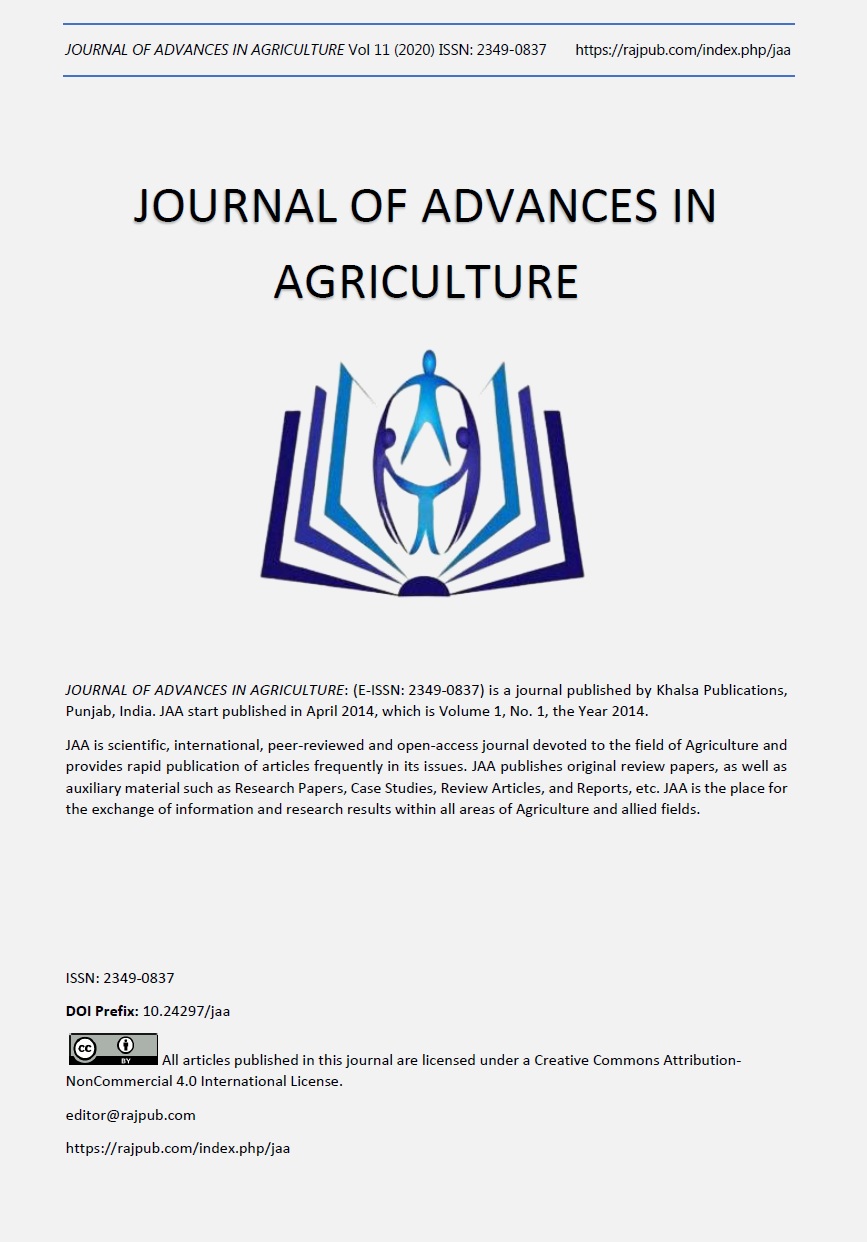Design of multilayer microfluidic paper chip and its visual detection of pesticide residues
DOI:
https://doi.org/10.24297/jaa.v11i.8861Keywords:
information fusion, multi-sensor detection system, intelligent detection equipment, crop growth information, facility horticultureAbstract
With the increase of China's grain production, the use of pesticides is gradually increasing. Traditional pesticide detection takes a long time and requires expensive experimental instruments, which is not conducive to the rapid and accurate detection of pesticide residues in the field. To solve this problem, this paper proposes a visual detection method of pesticide residues based on multi-layer microfluidic paper chips. The internal channel structure of paper chip is designed from the perspective of efficient mixing. Through the simulation of the mixed effect of three kinds of staggered channel structures, which are arc type, triangle type, and ladder type, the "ladder-type h-0.3, s-2.6" is selected as the best-staggered structure, and the mixing strength is 0.91534. The best simulation structure was tested by a colored reagent, and the image processing of 15 test results was carried out with MATLAB. The average mixing strength was 0.84, and the and the standard deviation was 0.022. The visual detection experiment of acetamiprid and profenofos in cabbage samples was carried out by using the device,The detection range of acetamiprid was 4~72 μg/kg, and the detection range of profenofos was 3~54 μg/kg . The recovery of acetamiprid was 75%~85%, and the recovery of profenofos was 80%~90%. The detection range and recovery rate indicate that the device has high repeatability and accuracy in the actual sample detection
Downloads
References
A S F , A J M , A M C , et al. Simultaneous determination of 15 pesticide residues in Chinese cabbage and cucumber by liquid chromatography-tandem mass spectrometry utilizing online turbulent flow chromatography[J]. Food ence and Human Wellness, 2020.González F J E, Vidal J L M, Cano M L C, et al. Levels of metamidophos in air and vegetables after greenhouse applications by gas chromatography[J]. Journal of Chromatography A, 1998, 829(1-2): 251-258.
Liu H, Crooks R M. Three-Dimensional Paper Microfluidic Devices Assembled Using the Principles of Origami[J]. Journal of the American Chemical Society, 2011, 133(44):17564-17566.
Santhiago M, Henry C S, Kubota L T. Low cost, simple three dimensional electrochemical paper-based analytical device for determination of p-nitrophenol[J]. Electrochimica Acta, 2014, 130: 771-777.
Sicard C, Glen C, Aubie B, et al. Tools for water quality monitoring and mapping using paper-based sensors and cell phones[J]. Water research, 2015, 70: 360-369.
Sicard C, Glen C, Aubie B, et al. Tools for water quality monitoring and mapping using paper-based sensors and cell phones[J]. Water research, 2015, 70: 360-369.
Lu Y, Shi W, Jiang L, et al. Rapid prototyping of paper-based microfluidics with wax for low-cost, portable bioassay[J]. Electrophoresis, 2009, 30(9): 1497-1500.
Lee Y K, Tabeling P, Shih C, et al. Characterization of a MEMS-fabricated mixing device[C]. International mechanical engineering Congress et exposition. Orlando, Florida. 2000: 505-511.
Qin, J. W., Thomas, F., Burks, W. Gordon Bonn.(2009). Detection of citrus canker using hyperspectral reflectance imaging with spectral information divergence. Journal of Food Engineering. 93(2), 183-191 DOI:10.1016/j.jfoodeng.2009.01.014
Downloads
Published
How to Cite
Issue
Section
License
Copyright (c) 2020 Li zhi Li , Han Ping Mao

This work is licensed under a Creative Commons Attribution 4.0 International License.
 All articles published in Journal of Advances in Linguistics are licensed under a Creative Commons Attribution 4.0 International License.
All articles published in Journal of Advances in Linguistics are licensed under a Creative Commons Attribution 4.0 International License.




